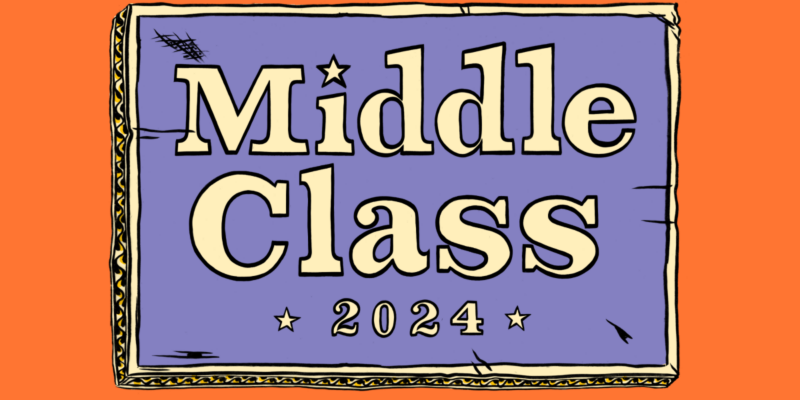
In June, Democratic advisers began circulating the usual warning: The party needed to change its message. As the Washington Post explained, focus group testing had shown that the slogan of “‘economic fairness’ was a loser.” Instead, Democrats should talk about “growing the middle class.” Soon, leaders like Rep. Hakeem Jeffries (D-N.Y.) and Sen. Elizabeth Warren (D-Mass.) followed the path of former President Barack Obama, who had made growing the middle class a key part of his platform. Democrats were again aiming their economic appeal at the group between the poor and the rich: the vague middle.
We are used to hearing politicians press to “grow,” “build,” or “expand” the middle class. The idea has a cross-partisan appeal, implying class politics without insisting on thornier demands: the need for redistribution (tax the rich) or hierarchy (trickle-down economics). But the phrase’s vexing dominance is a relatively recent trend.
The term “middle class” was rarely used in the nation’s first 140 years. In the 19th century, it referred overwhelmingly to the self-employed: farmers, artisans, and merchants. By the 20th century, it was largely composed of salaried workers.
It was only after the rise of industrial unionism in the 1930s that use of the term “middle class” began to skyrocket. C. Wright Mills—the American sociologist most closely associated with the label—described the “new” middle class in 1951 as having to act on “somebody else’s” priorities.
This coincided with the mistaken idea of the United States as a “middle-class nation.” It beat back a radical leftist politics, rebranding the bourgeoisie as a positive force to fit the antisocialist imperatives of the Cold War. But throughout the term’s evolution, it was never quite clear who was being described.
Mills’ work largely rejected the idea of a singular middle class; he preferred “middle classes.” He worried that in the celebratory atmosphere after World War II, scholars too often assumed almost everyone in America was happily middle class. Today, the term has a similar blurriness. It encompasses either 42 percent of the US population or more than 90 percent, depending on how surveys are structured (and depending on what people—who do not want to call themselves poor or rich—say). As Fortune notes, the middle class includes anyone from the “part-time bartender” to the “suburban power couple” earning 20 times more. People who employ or manage the labor of others land in the same class as those being bossed.
The wild imprecision in defining “middle class” is partially to blame for the term’s worst political mobilizations. Its popularity has elbowed out discussions of poverty; with both parties beholden to the rich while appealing to a middle that can include 96 percent of the electorate, attempts to rectify inequality are easily dismissed as divisive.
It was during the 1992 presidential election, when Bill Clinton prioritized what his camp called “middle-class dreams,” that explicit appeals to this vague group of voters became common.
Like today, Clinton’s pitch was driven by focus groups. His pollsters zeroed in on people in segregated Detroit suburbs, hoping to bring back Democratic voters who had become Republicans under Reagan. The all-white groups studied did mention class grievances—many in the focus groups were unionized workers—but the settings invited crabbed racial complaints more than “middle-class dreams.” For Clinton, “middle class” implied white middle class. And the promise to listen to this group was hardly helpful to everyone in the middle: It led to liberals urging curbs on welfare, policies that propelled incarceration, and legislation for an “effective death penalty.”
Still, in our age of austerity, the term “middle class” offers one of America’s only whiffs of actual class politics. We do need to listen to those who identify as middle class—not in their expressions of racism, but in their disquiet about the contradictions of their everyday lives. You can sense possibility in the shaky way white-collar workers define capitalist miseries—unpaid overtime, crushing consumer debt, abusive managers—as woes shared by all workers. The imprecise, often ideologically driven idea of a middle class might be a lie. But it still has a role in how a politics uniting working people can emerge.
David Roediger is the Foundation Professor of American Studies at the University of Kansas and the author of The Shrinking Middle Class: A Political History.















